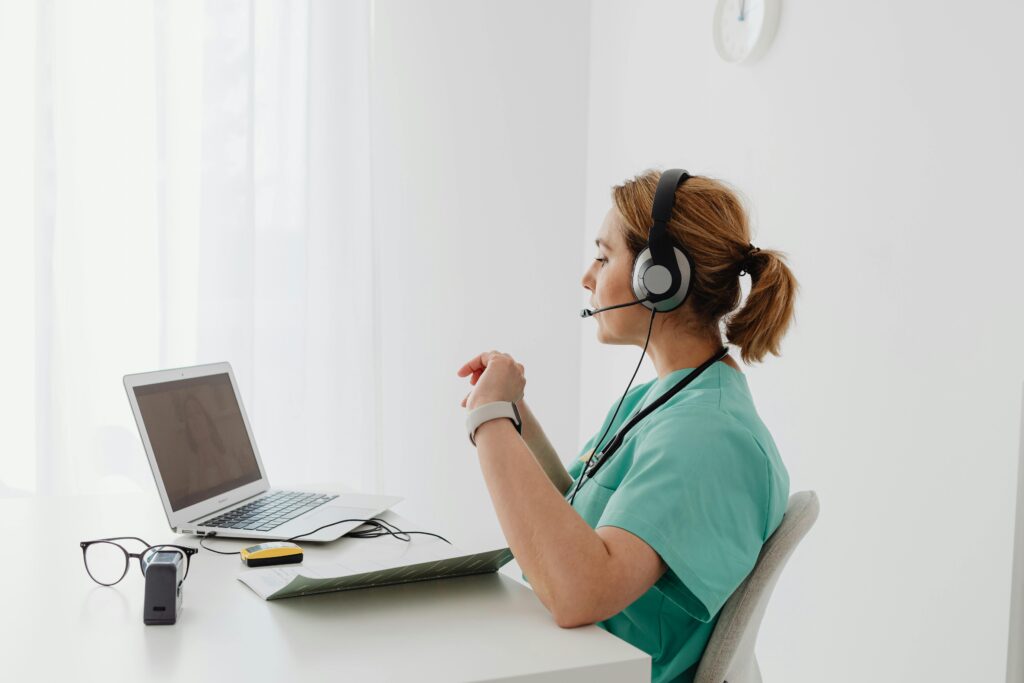Telehealth has changed the way patients connect with providers. What once required travel, long waits, and in-person appointments can now happen from the comfort of someone’s home. It’s no surprise that telehealth use has surged post-COVID pandemic, with millions of Americans turning to virtual visits for everything from primary care to chronic condition management.
While traditional telehealth has opened doors, many programs stop at a video call. Without in-person clinical support, important details can be missed, delays in treatment can occur, and hospital readmissions remain a risk.
That’s where Restore First Health’s Assisted TeleHealth Program is different.
Why Traditional Telehealth Isn’t Enough
A standard telehealth visit usually connects a patient with a provider via phone or video call. While convenient, this approach has limitations:
- No physical exam or bedside assessment
- Missed clinical details that can delay treatment
- Gaps in communication between care teams
- Increased risk of hospital readmissions when conditions aren’t caught early
For medically complex patients, especially seniors managing multiple conditions, these gaps can have serious consequences.
Watch: Assisted TeleHealth: Care That Puts a Nurse at the Bedside.
How Assisted TeleHealth Works
Restore First Health takes telehealth a step further by offering the patient two medical experts, at once. A nurse practitioner on the virtual call and a nurse right at the patient’s bedside, helping assess the situation and communicate directly with them.
Here’s how it works:
- A registered nurse (RN) is deployed into the patient’s home to complete a comprehensive assessment.
- At the same time, a nurse practitioner (NP) joins the visit virtually.
- Together, the RN and NP deliver a full, real-time evaluation, ensuring no problem is overlooked.
This dual approach strengthens communication, provides a clearer picture of the patient’s needs, and allows for immediate care decisions.
The Benefits for Patients
Our Assisted TeleHealth Program is designed to prevent the most common risks of traditional telehealth:
- No Delays in Care – With an RN at the bedside, issues can be identified and escalated immediately.
- Fewer Hospital Readmissions – Early intervention and accurate assessments help prevent complications from worsening.
- Comprehensive Support – Patients benefit from both the virtual expertise of the NP and the hands-on care of the RN.
- Care Without Leaving Home – Our patients receive the right care, at the right time, in the comfort of their own homes.
This program wraps a true care team around the patient, eliminating gaps and ensuring stronger outcomes.
Like what you’re reading? Sign up for our newsletter.
Telehealth Is Only Getting Bigger
The rise of Telehealth is not slowing down. In fact, studies have shown:
- Nearly one in three Medicare beneficiaries now use Telehealth for at least some of their care.
- Patients save hours of travel time and hundreds of dollars annually in indirect costs when switching to virtual visits.
- Telehealth continues to expand access for people with chronic conditions, rural populations, and older adults who face barriers to in-person care.
By combining these benefits with bedside support, Restore First Health is setting a new standard for virtual care.
Putting Patients First
When every minute matters, patients deserve a model that prevents delays, closes gaps, and prioritizes outcomes. That’s exactly what the Assisted TeleHealth Program delivers: faster care, stronger communication, and healing at home.
At Restore First Health, we’re proud to lead the way in transforming Telehealth, always putting the patient first.
Contact us today:
We’ll coordinate the care, so you don’t have to.
- Refer a patient. https://restorefirsthealth.com/refer-a-patient/
- Schedule a consult. https://restorefirsthealth.com/request-a-consultation/
Follow us to keep up to the date on the latest health news:
U.S. National Library of Medicine. Telemedicine interventions in chronic disease care. National Institutes of Health. Retrieved from: https://pmc.ncbi.nlm.nih.gov/articles/PMC11298029/
National Library of Medicine. Telehealth adoption and patient access. National Institutes of Health. Retrieved from: https://pmc.ncbi.nlm.nih.gov/articles/PMC9013222/
National Cancer Institute. Telehealth saves cancer patients time and money. National Institutes of Health. Retrieved from: https://www.cancer.gov/news-events/cancer-currents-blog/2023/telehealth-cancer-care-saves-time-money
Office of the Assistant Secretary for Planning and Evaluation (ASPE). Telehealth among Medicare and Medicaid beneficiaries. U.S. Department of Health & Human Services. Retrieved from: https://aspe.hhs.gov/sites/default/files/documents/4e1853c0b4885112b2994680a58af9ed/telehealth-hps-ib.pdf
